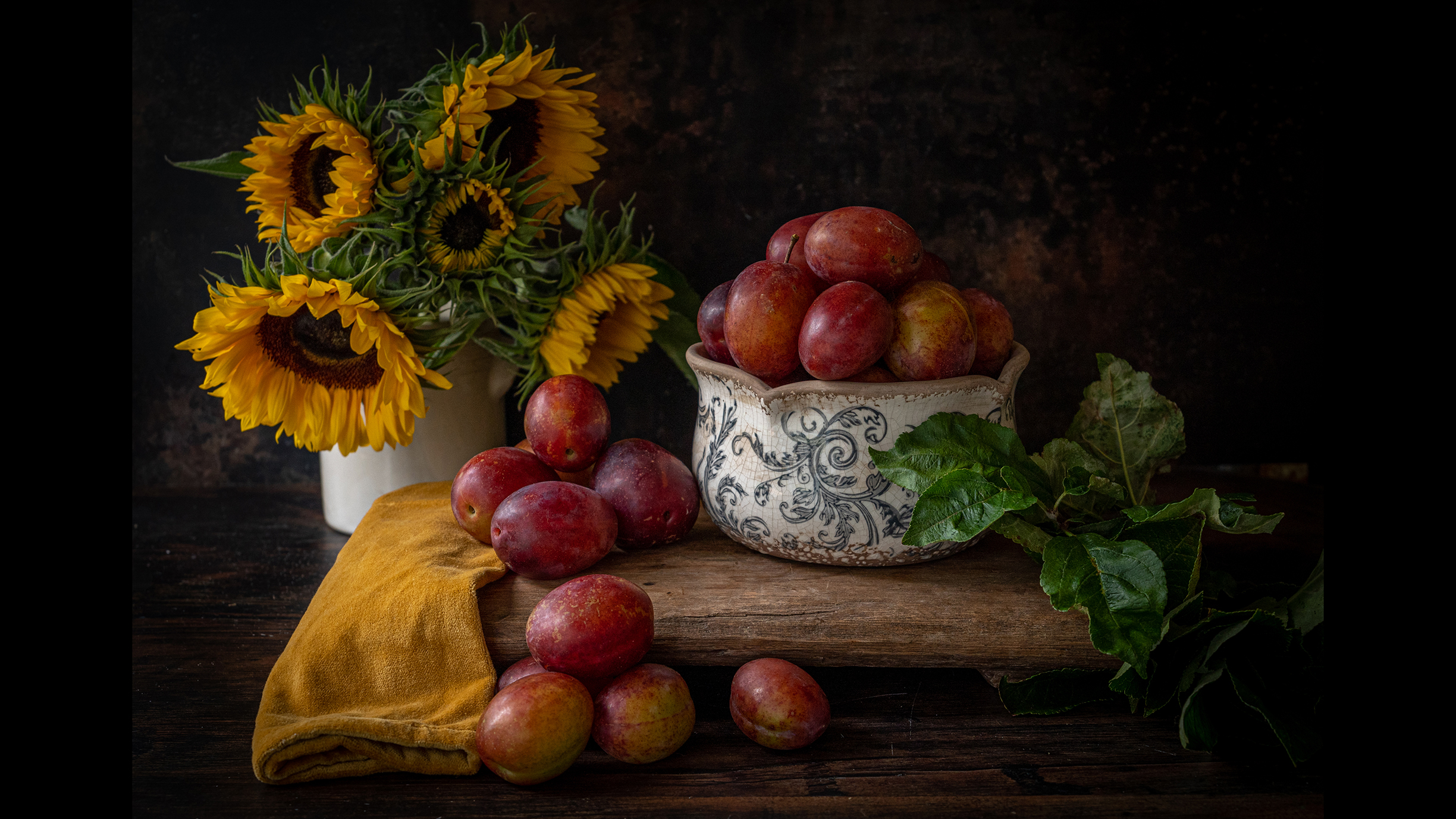
Next to being a commercial food photographer and stylist, Ronni Allen is also a food still-life photographer, selling her art in the form of prints and cards. She says, "I am inspired by natural simple produce, the intricate detail on food that we take for granted, the miracle of seasonal food, and the nostalgia food gives me.”
I had the pleasure of interviewing Ronni about her still-life work and analyzing their image ‘The Reign of the Victoria Plum’. We discussed the techniques she used to capture the scene and why it works...
1. Old Master palette
When setting the scene, the use of colors was key for Ronni to complement the Old Master-inspired photo she wanted to create. As she explains, the creative process began not with a camera but with a notebook and pen.
“Thinking about what I want to achieve and what kind of props, backdrops, or mood I need to execute my idea, helps me set up,” Ronni says. “To achieve the color palette of an Old Master, I used warm colors like brown, ochre, amber, and muddy gold, and muted the whites to cream or grey. The tones are highlighted by the natural light, giving the image the feel of layers of color. It was also important to use props that match the age of the image.”
2. Natural depth
“I am constantly learning how to be creative with natural light, it feels like an organically creative tool in my photography that complements my style.” By using natural light, Ronni has created depth within the frame. “I feel that I can be more creative and use it to my benefit by adding richness or using harsh light to bring out natural shadows for a bright and vibrant image,” she says.
3. Different textures
By integrating various materials, Ronni has added several layers to the composition. “I used an old, worn, dark wood, mottled backdrop, which was softened by having some highlights picked out by the natural light. Rather than being dark, this gives it subtle details, providing texture and depth to the image,” she says. “The use of the ochre velvet cloth not only adds texture but also gives a luxury and sumptuousness to the frame.” To make the textures and subjects visually tangible, perspective was crucial. “First, I captured the image from a side view at eye level,” Ronni says, “but I felt it would work better from a higher angle to give the impression that it was placed on a sideboard or a wall.”
4. Hero subject
“I wanted the plums to be the hero of the image – it’s the reign of the Victoria plum – and also integrated some vibrant sunflowers,” says Ronni. Her goal was to evoke an appreciation of the seasonality of the plums and sunflowers – and of autumn in general. “I used the vintage blue and white bowl to show a seemingly full bowl of plums cascading onto the board and table and giving a voluptuous juicy eyecatcher that the viewer is first drawn towards,” she says. “The sunflowers were placed behind the board so I could bring the plums to the forefront. The leaves from the plum tree have been placed on the right side of the frame to balance the green in the sunflower leaves. I feel that this brings the image together and the darker backdrops help the subjects pop out.”
Tech details

Camera: Nikon Z5
Lens: Nikkor Z 24-50mm f/4-6.3
Aperture: f/6.3
Shutter speed: 1/180 sec
ISO: 400
Others in the Why Shots Work series
- Urban street photographer reveals his candid capture secrets
- Photographer tells story of getting up close and personal with a python
- Discover four key elements that make this stunning photo a success
- The 4 photographic decisions that take this motorsport shot to the next level
- Photographer tells story of his amazing shot of wallabies fighting on the beach







